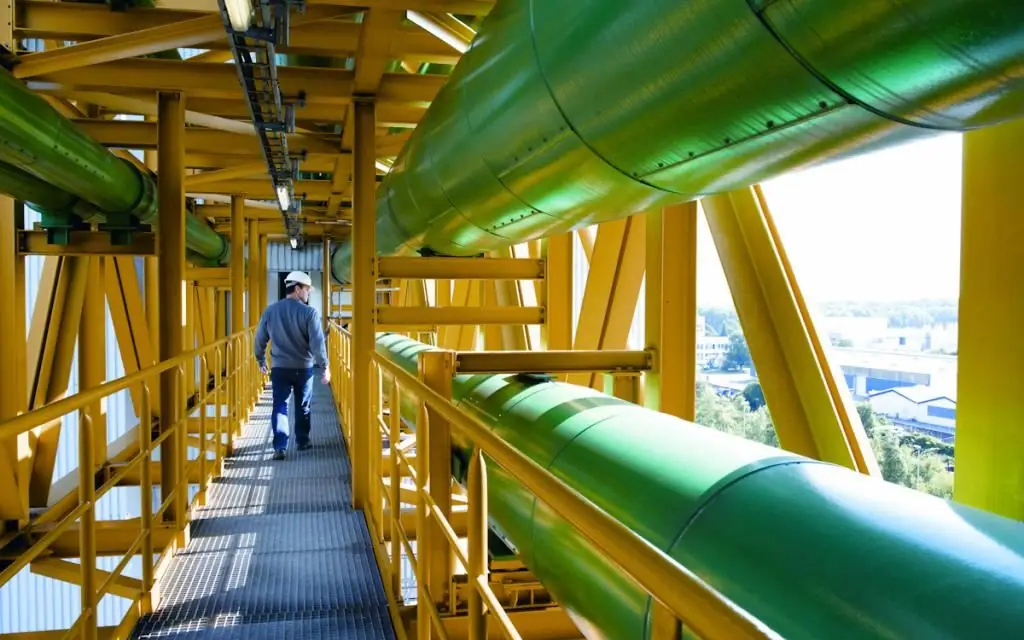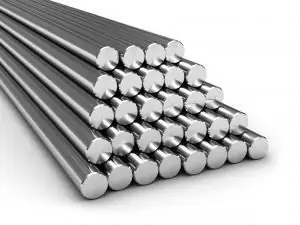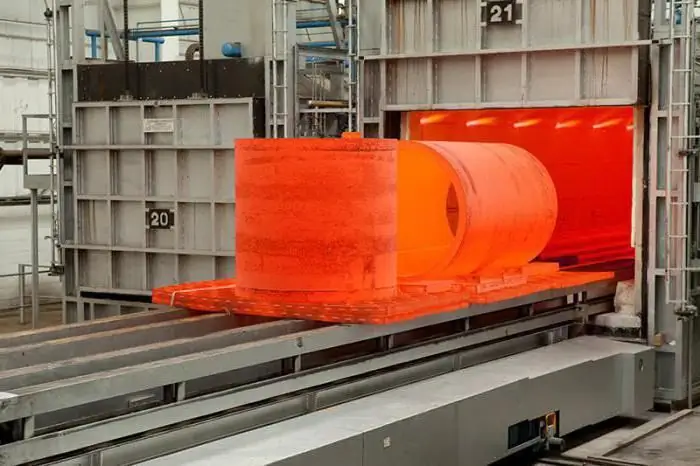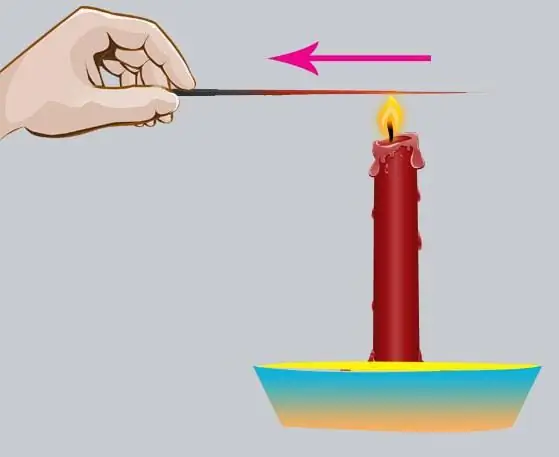2025 Author: Howard Calhoun | [email protected]. Last modified: 2025-01-24 13:10:33
Any material body has such a characteristic as heat, which can increase and decrease. Heat is not a material substance: as part of the internal energy of matter, it arises as a result of the movement and interaction of molecules. Since the heat of different substances may differ, there is a process of transferring heat from a hotter substance to a substance with a smaller amount of heat. This process is called heat transfer. We will consider the main types of heat transfer and the mechanisms of their action in this article.
Determination of heat transfer
Heat transfer, or the process of temperature transfer, can occur both inside matter and from one substance to another. At the same time, the intensity of heat transfer largely depends on the physical properties of matter, the temperature of substances (if several substances participate in heat transfer) and the laws of physics. Heat transfer is a process that always proceeds unilaterally. The main principle of heat transfer is that the hottest body always gives off heat to an object with a lower temperature. For example, when ironing clothes, a hot irongives warmth to the trousers, and not vice versa. Heat transfer is a time-dependent phenomenon that characterizes the irreversible distribution of heat in space.
Heat transfer mechanisms
Mechanisms of thermal interaction of substances can take different forms. There are three types of heat transfer in nature:
- Thermal conductivity is a mechanism of intermolecular heat transfer from one part of the body to another or to another object. The property is based on the inhomogeneity of temperature in the substances under consideration.
- Convection - heat exchange between fluid media (liquid, air).
- Radiation action is the transfer of heat from heated and heated bodies (sources) due to their energy in the form of electromagnetic waves with a constant spectrum.
Let's consider the listed types of heat transfer in more detail.
Thermal conductivity
Most often, thermal conductivity is observed in solids. If, under the influence of any factors, areas with different temperatures appear in the same substance, then thermal energy from a hotter area will pass to a cold one. In some cases, this phenomenon can even be observed visually. For example, if we take a metal rod, say, a needle, and heat it on fire, then after some time we will see how thermal energy is transferred through the needle, forming a glow in a certain area. At the same time, in a place where the temperature is higher, the glow is brighter and, conversely, where t is lower, it is darker. Heat conduction can also be observed between two bodies (a mug of hot tea and a hand)

The intensity of heat flux transfer depends on many factors, the ratio of which was revealed by the French mathematician Fourier. These factors primarily include the temperature gradient (the ratio of the temperature difference at the ends of the rod to the distance from one end to the other), the cross-sectional area of the body, and the thermal conductivity coefficient (it is different for all substances, but the highest is observed in metals). The most significant coefficient of thermal conductivity is observed in copper and aluminum. It is not surprising that these two metals are more often used in the manufacture of electrical wires. Following the Fourier law, the heat flux can be increased or decreased by changing one of these parameters.
Convection types of heat transfer
Convection, which is characteristic mainly of gases and liquids, has two components: intermolecular thermal conductivity and movement (distribution) of the medium. The mechanism of action of convection occurs as follows: with an increase in the temperature of a fluid substance, its molecules begin to move more actively, and in the absence of spatial restrictions, the volume of the substance increases. The consequence of this process will be a decrease in the density of the substance and its upward movement. A striking example of convection is the movement of air heated by a radiator from a battery to the ceiling.

Distinguish between free and forced convective types of heat transfer. Heat transfer and mass movement in the free type occurs due to the heterogeneity of the substance, that is, the hot liquid rises above the cold naturalway without being influenced by external forces (e.g. heating a room with central heating). With forced convection, the movement of the mass occurs under the influence of external forces, for example, stirring tea with a spoon.

Radiant heat transfer
Radiant or radiative heat transfer can occur without contact with another object or substance, therefore it is possible even in an airless space (vacuum). Radiative heat transfer is inherent in all bodies to a greater or lesser extent and manifests itself in the form of electromagnetic waves with a continuous spectrum. A prime example of this is the sun. The mechanism of action is as follows: the body continuously radiates a certain amount of heat into the space surrounding it. When this energy hits another object or substance, part of it is absorbed, the second part passes through, and the third part is reflected into the environment. Any object can both radiate heat and absorb, while dark substances are able to absorb more heat than light ones.

Combined heat transfer mechanisms
In nature, the types of heat transfer processes are rarely found separately. Much more often they can be seen together. In thermodynamics, these combinations even have names, for example, thermal conductivity + convection is convective heat transfer, and thermal conductivity + thermal radiation is called radiative-conductive heat transfer. In addition, there are such combined types of heat transfer as:
- Heat dissipation -the movement of thermal energy between a gas or liquid and a solid.
- Heat transfer is the transfer of t from one matter to another through a mechanical obstacle.
- Convective-radiant heat transfer is formed by combining convection and thermal radiation.
Types of heat transfer in nature (examples)
Heat transfer in nature plays a huge role and is not limited to the heating of the globe by the sun's rays. Extensive convection currents, such as the movement of air masses, largely determine the weather throughout our planet.

The thermal conductivity of the Earth's core leads to the appearance of geysers and the eruption of volcanic rocks. These are just a few examples of heat transfer on a global scale. Together, they form the types of convective heat transfer and radiative-conductive types of heat transfer necessary to sustain life on our planet.
The use of heat transfer in anthropological activities
Heat is an important component of almost all production processes. It is difficult to say which type of heat exchange is used by man most of all in the national economy. Probably all three at the same time. Heat transfer processes are used to smelt metals, producing a vast array of goods ranging from everyday items to spacecraft.

Extremely important for civilization are thermal units capable of converting thermal energy into useful power. Amongthey can be called gasoline, diesel, compressor, turbine units. For their work, they use different types of heat transfer.
Recommended:
Heat energy tariff: calculation and regulation. Heat energy meter

Who approves and regulates heat tariffs? The main factors affecting the cost of the service, specific figures, the trend of increasing cost. Thermal energy meters and self-calculation of the cost of the service. Prospects for billing. Varieties of tariffs for organizations and citizens. Calculation of REC tariffs, documentation required for this
Heat resistance and heat resistance are important characteristics of steels

Ordinary structural steels, when heated, abruptly change their mechanical and physical properties, begin to actively oxidize and form scale, which is completely unacceptable and creates a threat of failure of the entire assembly, and possibly a serious accident. To work at elevated temperatures, materials engineers, with the help of metallurgists, created a number of special steels and alloys. This article gives a brief description of them
Heat-resistant alloys. Special steels and alloys. Production and use of heat-resistant alloys

Modern industry cannot be imagined without such material as steel. We encounter it at almost every turn. By introducing various chemical elements into its composition, it is possible to significantly improve the mechanical and operational properties
Heat treatment of alloys. Types of heat treatment

Heat treatment of alloys is an integral part of the production process of ferrous and non-ferrous metallurgy. As a result of this procedure, metals are able to change their characteristics to the required values. In this article, we will consider the main types of heat treatment used in modern industry
OSAGO coefficients. OSAGO territory coefficient. OSAGO coefficient by regions

From April 1, 2015, regional coefficients for autocitizenship were introduced in Russia, and two weeks later, the base ones were changed. Tariffs increased by 40%. How much will drivers now have to pay for an OSAGO policy?

